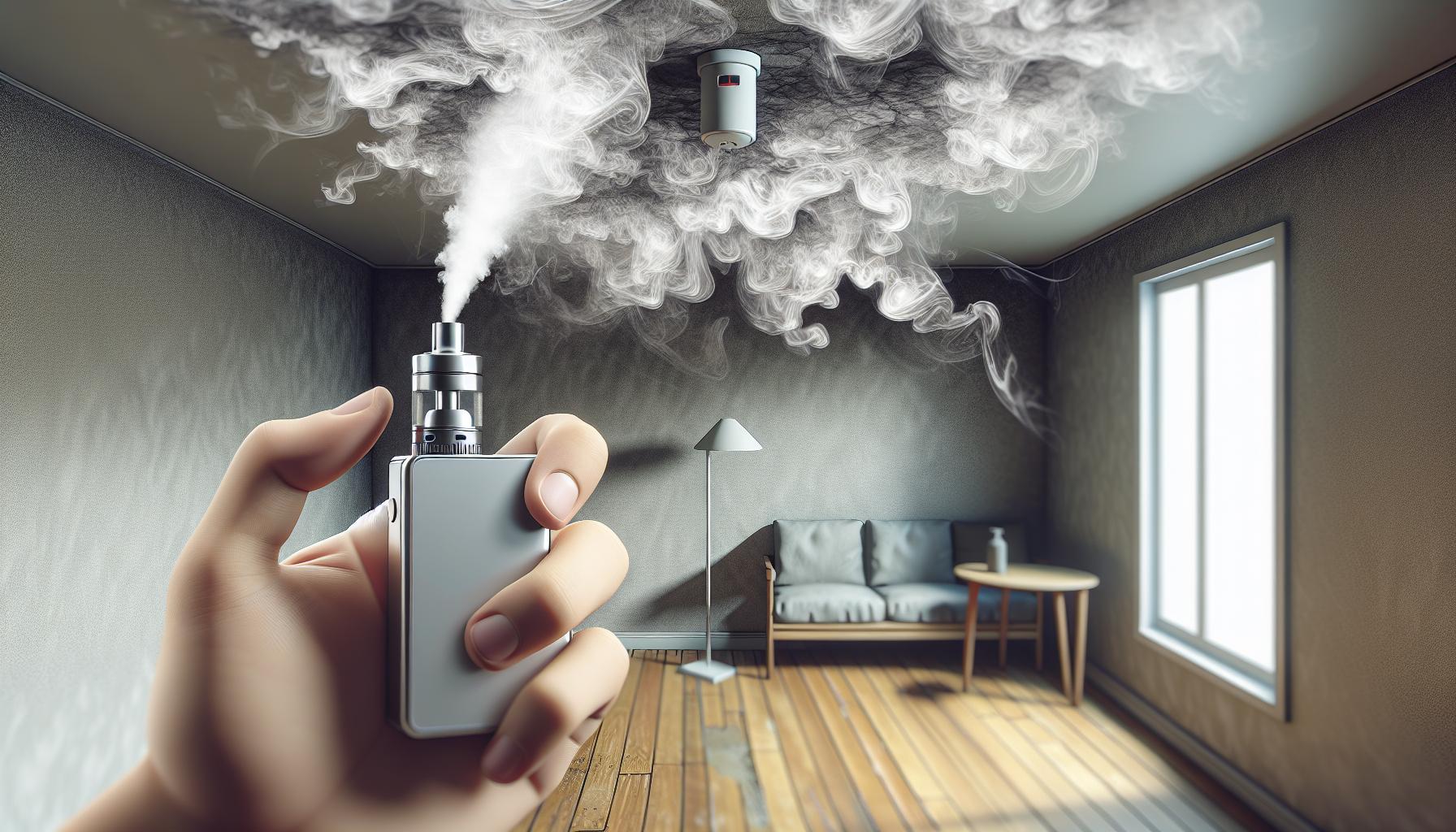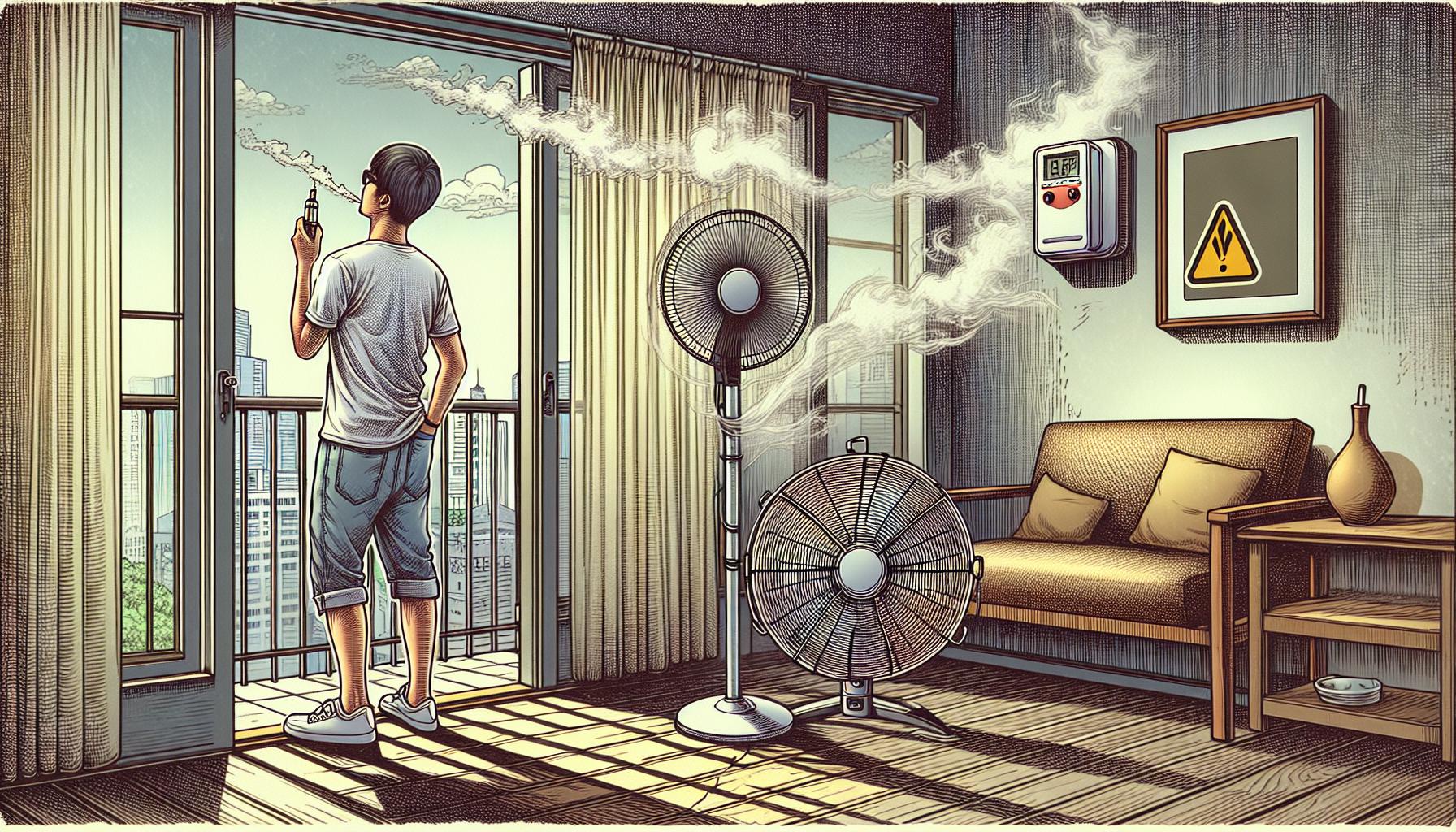I’ve often wondered if vaping could trigger a smoke alarm, especially in places where setting one off might cause a scene. With the rising popularity of vaping, it’s a question that’s crossed the minds of many, whether you’re at home, in a hotel, or even at work. It’s not just about avoiding embarrassment but also understanding the potential risks involved.
Smoke alarms are designed to detect particles in the air, but does vapor from an e-cigarette have the same effect? Knowing how these alarms work and how vaping interacts with them can save you from unexpected disruptions. Let’s explore the connection between vaping and smoke alarms to clear up any confusion.
What Are Smoke Alarms Designed To Detect?
Smoke alarms are designed to identify specific environmental changes indicating potential fires. These devices focus primarily on smoke particles, heat, or visible signs of combustion.
How Smoke Alarms Work
Smoke alarms detect particles or changes in their environment using built-in sensors. Ionization alarms sense tiny smoke particles by disrupting an electrical current, while photoelectric alarms activate when smoke scatters light beams within a chamber. Both systems aim to identify fire risks quickly and accurately.
Types Of Smoke Alarms And Their Sensitivity
Smoke alarms fall into three primary categories:
- Ionization Alarms: These detect fast-burning fires with minimal smoke. They are sensitive to small, nearly invisible particles.
- Photoelectric Alarms: These detect smoldering fires with thicker smoke. They react to larger, more visible particles.
- Dual-Sensor Alarms: These combine ionization and photoelectric technologies to detect both fire types, enhancing accuracy.
Each alarm’s sensitivity depends on its design, making it crucial to match the alarm type to the environment it’s placed in. For example, photoelectric alarms perform better near kitchens to avoid false triggers from cooking activities.
Can Vaping Trigger A Smoke Alarm?

Vaping can trigger a smoke alarm depending on several factors. The type of alarm, the density of the vapor, and the environment all play a role.
Differences Between Smoke And Vapor
Smoke consists of solid particles, liquid droplets, and gases produced by combustion. Vapor, from e-cigarettes, is an aerosol composed of liquid droplets and does not result from burning. Ionization alarms respond more to smaller particles in smoke, while photoelectric alarms detect larger particles. Vapor can sometimes mimic these characteristics, especially in dense or confined spaces.
Circumstances That Increase The Likelihood
Dense vapor clouds can trigger alarms in close proximity. Using vaping devices in small rooms, near alarms, or in areas with poor ventilation increases the chance of activation. High-powered vape mods producing thick clouds are more likely to set off alarms than low-powered devices.
Factors Affecting Smoke Alarm Activation From Vaping

Several factors influence whether vaping triggers a smoke alarm, including airflow, proximity to the alarm, and the volume of vapor released.
Room Ventilation And Size
Ventilation and room dimensions determine how vapor disperses. In well-ventilated spaces, vapor dissipates quickly, reducing the chance of alarm activation. Smaller or enclosed rooms retain vapor longer, increasing the density near the alarm. For example, vaping in a large, open room with fans or windows generally poses less risk than vaping in a small, sealed bathroom.
Proximity To The Smoke Alarm
Distance from the alarm impacts its sensitivity to vapor. Alarms respond more strongly when vaping occurs within 1-3 feet of the sensor, especially for photoelectric models. Keeping vaping devices farther from the alarm reduces the likelihood of activation. For instance, vaping directly below an alarm is more likely to set it off than vaping near a distant window or doorway.
Amount Of Vapor Produced
The volume of vapor correlates with the type of vaping device and its settings. Devices with high power or sub-ohm coils generate dense clouds, which are more likely to mimic smoke characteristics detectable by alarms. Using low-powered or pod systems that emit smaller vapor amounts decreases the chances of triggering. For example, a high-powered mod producing thick plumes has a greater activation risk compared to a low-watt pod system.
Tips To Avoid Triggering Smoke Alarms While Vaping

It’s possible to enjoy vaping without accidentally setting off a smoke alarm. Implementing specific strategies can significantly reduce the likelihood of false alarms.
Choosing The Right Location
Selecting an appropriate spot minimizes vaping-related interruptions. I avoid vaping directly below or within 3 feet of a smoke alarm, as proximity increases the chance of activation. Open spaces are better since vapor disperses more efficiently, reducing density near the detector. When indoors, I choose areas without multiple alarms or concentrated detection zones, like a hallway with multiple sensors.
Proper Ventilation Strategies
Good airflow lessens vapor density where alarms are present. I keep windows and doors open during vaping sessions, ensuring fresh air flow helps dissipate vapor quickly. In enclosed spaces, ventilation systems, such as an exhaust fan, create a draft that moves vapor away from alarms. I also ensure continuous airflow when using high-powered vaping devices to manage thicker vapor clouds effectively.
Using Fans Or Air Purifiers
Fans and air purifiers improve vapor dispersion in small or poorly ventilated spaces. Positioning a fan to direct vapor away from an alarm prevents it from lingering around the sensor. Air purifiers equipped with HEPA filters actively capture vapor particles, improving air quality and reducing density. I use these devices when vaping indoors to maintain a safe environment without risking alarm triggers.
Conclusion
Understanding how vaping interacts with smoke alarms can save you from unnecessary hassles. By being mindful of your environment, choosing the right vaping device, and following simple tips like maintaining proper ventilation, you can significantly reduce the risk of triggering an alarm.
Vaping responsibly isn’t just about personal comfort; it’s also about respecting shared spaces and avoiding disruptions. A little awareness goes a long way in ensuring a smooth experience for everyone involved.
Frequently Asked Questions
Can vaping trigger a smoke alarm?
Yes, vaping can trigger a smoke alarm, especially if dense vapor clouds are present near the alarm. Factors like the type of alarm, proximity to the sensor, and poor ventilation increase the likelihood of activation.
How do smoke alarms detect environmental changes?
Smoke alarms detect environmental changes through sensors designed to identify smoke particles or heat. Ionization alarms detect small particles from fast-burning fires, while photoelectric alarms detect larger particles from smoldering fires.
Does vapor from vaping differ from smoke?
Yes, vapor differs from smoke. Vapor is an aerosol made of liquid droplets without combustion, while smoke consists of solid particles, liquid droplets, gases, and results from burning.
Is the risk of vaping setting off alarms higher in small rooms?
Yes, smaller rooms retain vapor longer, increasing its density and the chance of triggering smoke alarms. Poor ventilation can exacerbate this risk.
Which vaping devices are more likely to set off alarms?
High-powered vaping devices, which produce thick vapor clouds, are more likely to trigger smoke alarms compared to low-powered devices that generate smaller amounts of vapor.
How close can I vape to a smoke alarm without setting it off?
To avoid setting off an alarm, it’s best to vape at least 3 feet away from the sensor. Vaping directly below or close to alarms increases the chance of activation.
Does ventilation reduce the risk of vaping setting off an alarm?
Yes, proper ventilation, like opening windows, doors, or using exhaust fans, helps disperse vapor and lowers the risk of it triggering a smoke alarm.
Can using an air purifier prevent vaping from setting off a smoke alarm?
Yes, using an air purifier with a HEPA filter can help reduce vapor density in the air, minimizing the likelihood of triggering a smoke alarm.
Are photoelectric or ionization alarms more sensitive to vapor?
Photoelectric alarms are generally more sensitive to vapor because they detect larger particles, which vapor can mimic under certain conditions.
What are the best tips to avoid setting off a smoke alarm while vaping?
Vape in open, ventilated areas, keep at least 3 feet away from alarms, use fans to direct vapor away, and consider low-powered devices to reduce thick vapor production.
